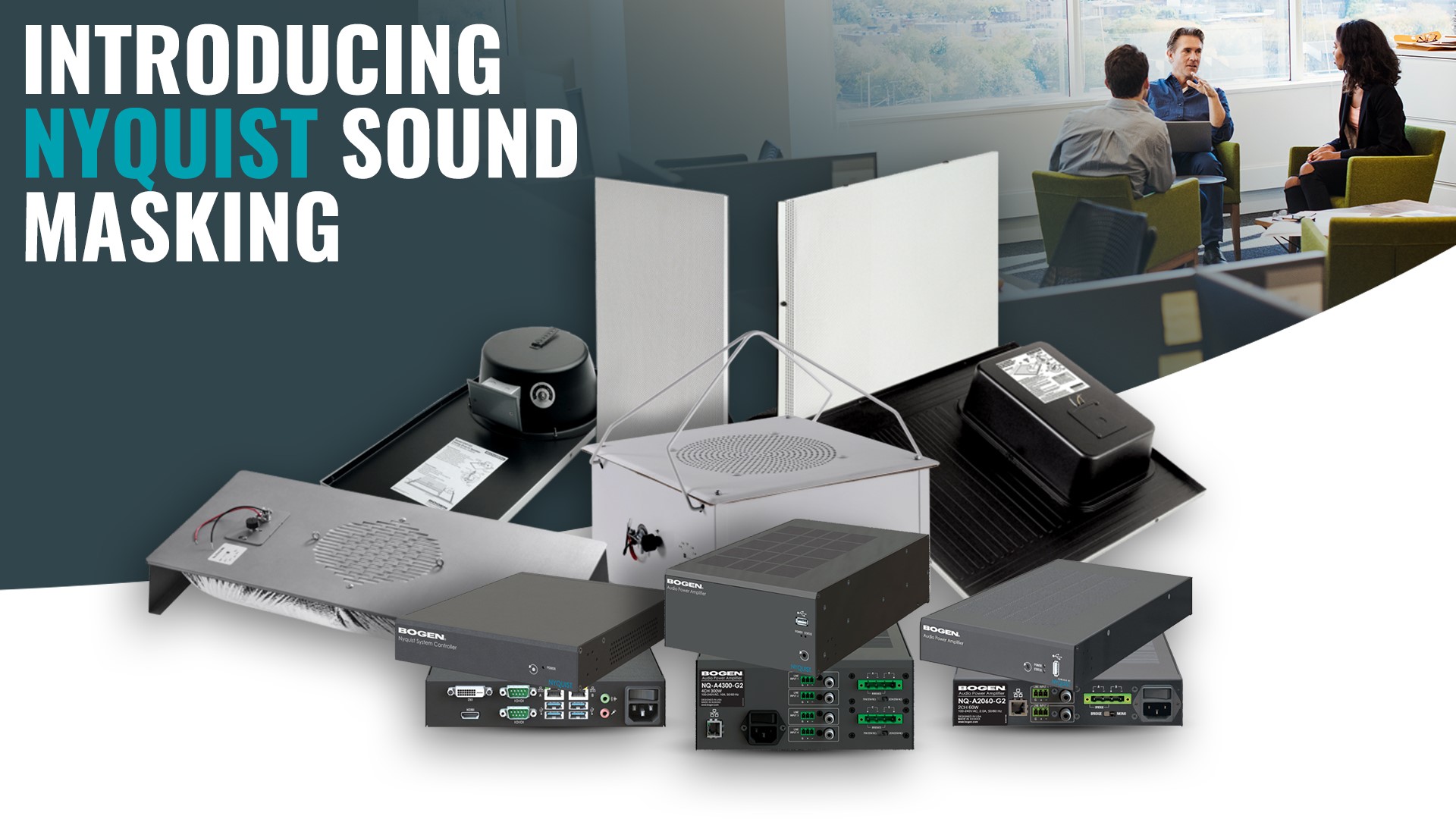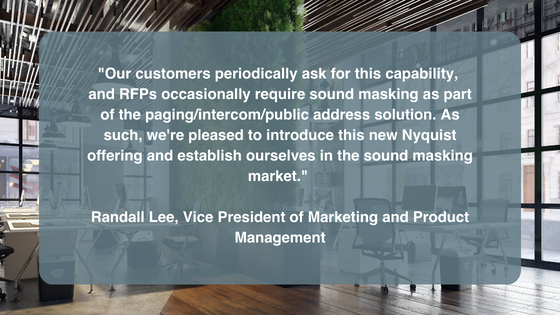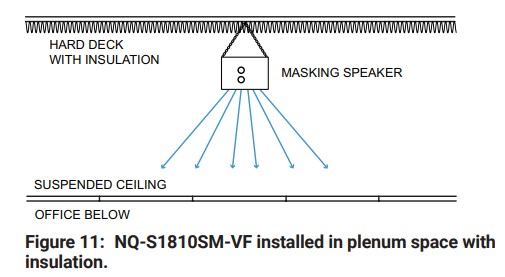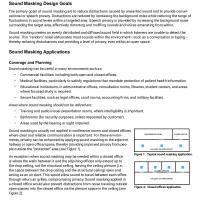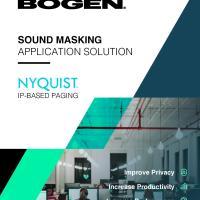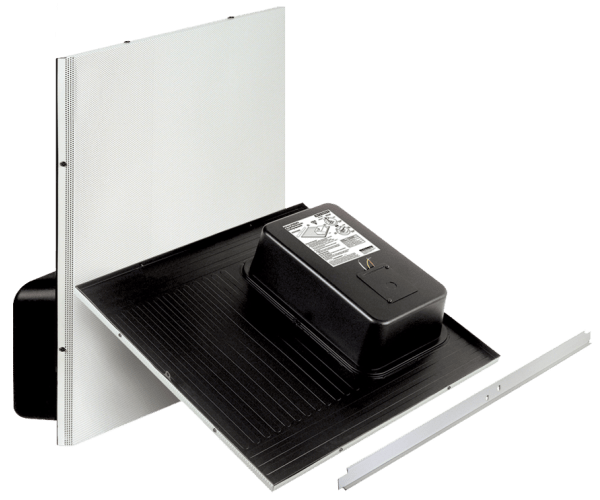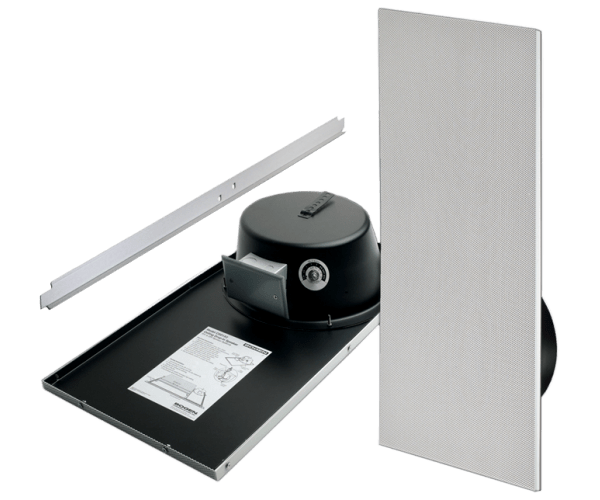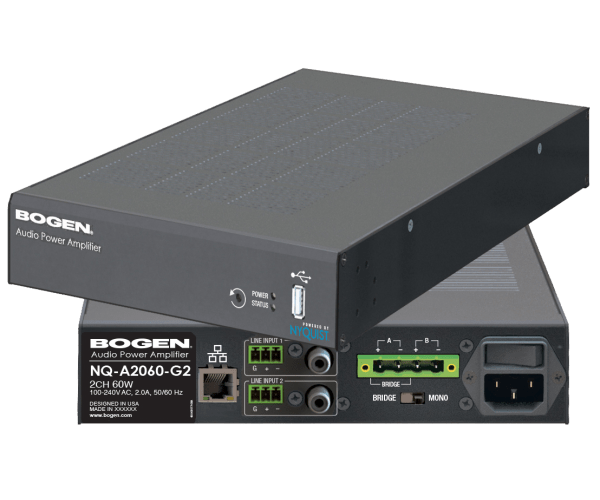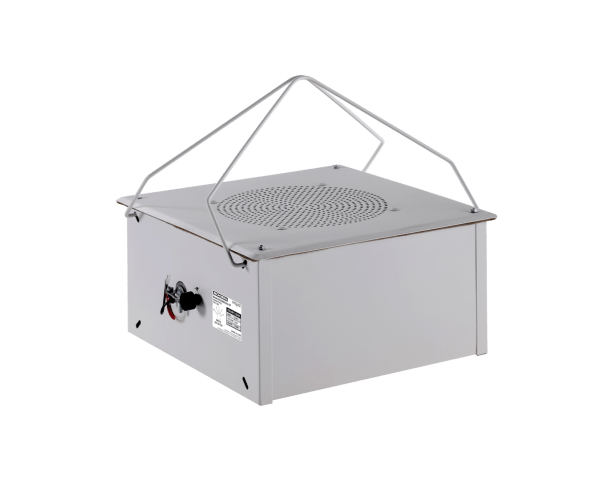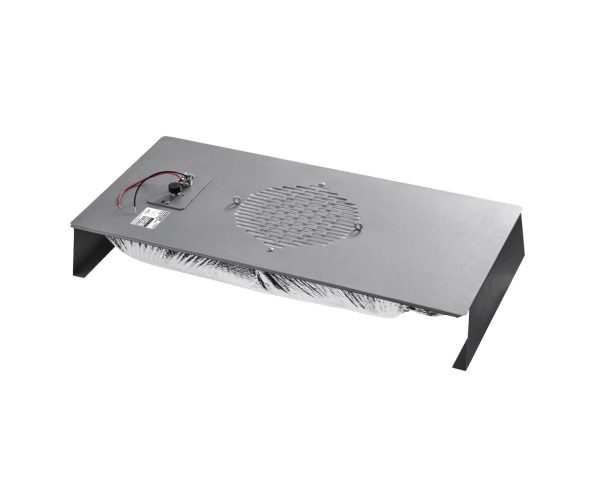
Sound Masking
Leveraging Bogen’s 90+ years of audio engineering excellence, Sound Masking delivers superior performance, high reliability, ease of use, and flexible coverage across any indoor space.
Sound Masking is an integral, optional feature of the Nyquist platform and is not intended to be deployed as a standalone product. The sound masking feature is controlled by the Nyquist system server running software versions E7000 release 8.0 and C4000 release 5.0, or higher, and requires dedicated Nyquist audio power amplifiers (NQ-Axxxx or NQ-Axxxx-G2), along with dedicated sound masking speakers for implementation.
Sound masking systems have been used since the 1990s with the purpose to “mask” or cover indirect conversations for speech privacy reasons, and to minimize distraction for those people nearby that are not participating in those conversations, maximizing their focus on tasks at hand.
It is more than a white noise or pink noise generator. Effective sound masking reduces intelligibility for unintended listeners, improving conversation privacy, and allowing them to better concentrate on their work, therefore increasing productivity.
A Nyquist Sound Masking License (NQ-C4000SML) is required for sound masking functionality. This is an optional, one-time, system-wide license required to enable the Sound Masking capability within a C4000 system.
For more information, please reference the C4000 Software License Descriptions.
Are there any other components needed besides the correct NQ system software version, and speakers?
Yes, NQ-Axxxx-G2 Gen2 amplifiers must be used to create and amplify the sound masking audio signal to the speakers. (First generation NQ-Axxxx amps are supported, but are no longer sold.)
Are the speakers used for sound masking also used for public address, paging or intercom functions?
No, the sound masking option requires dedicated speakers for optimal performance.
Can I get a license on my existing Nyquist system?
The option is available for E7000 systems running version 8.0 and higher, and C4000 systems on version 5.0 and higher.
Do I have to use Bogen’s sound masking speakers?
No, but performance is only guaranteed with Bogen’s speakers.
What mix of Bogen speakers should I use?
Go through a complete design process for the sound masking system customized for your needs. That will identify the types of speakers needed: up or down firing, ceiling tile or suspended in the plenum area above the ceiling – and the number required. The SMS1810-SCG and -VF are dedicated sound masking speaker sets. Our CSD series can be used for down-firing ceiling tile configurations. Other 25V/70V Bogen speakers are also supported.
Can I buy a standalone sound masking system from Bogen?
Yes, a C4000 can be purchased with the NQ software and sound masking option license for sound masking only, and it would have all the standard C4000 Nyquist features available as well.
If I must add sound masking zones, or change them around, or both, can I do that?
Yes.
Does the Sound Masking Feature option affect SUS (Software Update Subscription) pricing?
No, but SUS coverage does cover any future enhancements to this feature capability.
Sound masking can be useful in many environments such as:
• Commercial facilities, including both open and closed offices.
• Medical facilities, particularly to satisfy regulations that mandate protection of patient health information.
• Educational institutions, in administrative offices, consultation rooms, libraries, student centers, and areas where focused study is required.
• Secure facilities, such as legal offices, court rooms, accounting firms, and military facilities.
Areas where sound masking should not be utilized are:
• Training and audio/visual presentation rooms, where intelligibility is important.
• Bathrooms (for security purposes, unless requested by customer).
• Areas used by the hearing or sight impaired.
The ceiling plenum is the most common location to install sound-masking speakers. The specific type of speaker to use depends on the plenum’s depth and available space.
A typical office has a height of 9’ from the floor to the visible face of drop-ceiling tiles. The plenum extends upwards from the top of the drop ceiling to the structural ceiling (hard deck) above. In this kind of construction, either install NQ-SMS1810-SCG on top of the ceiling tile grid to avoid a cluttered plenum or, using the chain kit, hang NQ-SMS1810-VF upward-facing from the structural ceiling, with the bottom of each speaker about 6” to 8” above the suspended ceiling grid.
For optimal masking with either layout, speakers should be placed in a grid pattern. Since sound mixes well in the open plenum space, this will give an even coverage of sound masking. The taller the plenum space, the further apart the speakers should be and the higher the wattage should be set for the transformer taps. The shorter the plenum space, the closer the speakers should be to one another.
*Image figures are taken from the Sound Masking Design Guide, available for download below


